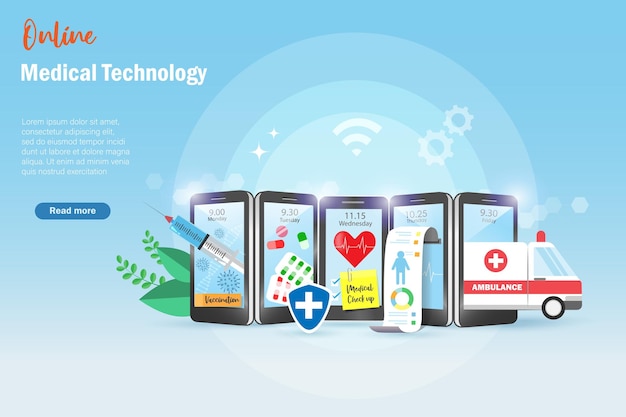Why Subscription Based Healthcare is Acquiring Popularity Among Patients Today
Why Subscription Based Healthcare is Acquiring Popularity Among Patients Today
Blog Article
How Subscription-Based Health Care Is Revolutionizing the Clinical Industry

The Surge of Registration Healthcare
In recent times, the healthcare market has experienced a significant shift in the direction of subscription-based versions, mirroring more comprehensive customer fads preferring convenience and predictability. This improvement is driven by the raising demand for even more tailored and obtainable care remedies. Registration medical care, occasionally described as attendant medicine or direct primary treatment, provides people a set month-to-month charge for a series of medical services, considerably altering traditional fee-for-service versions.
The surge of membership health care is assisted in by developments in technology, which enable structured communication between providers and people - subscription based healthcare. Digital systems and telehealth services have actually ended up being integral, supplying people the capacity to arrange appointments, accessibility medical documents, and get consultations online. This technical integration not just improves person interaction but additionally allows carriers to deliver extra effective treatment
Furthermore, the registration model straightens with the developing assumptions of patients that look for more control over their health care expenditures and experiences. By getting rid of the changability of co-pays and insurance cases, subscription-based medical care provides a simple and clear approach. While this design is acquiring traction, its spreading faces difficulties such as governing obstacles and the need for wider approval within the traditional health care ecological community. Nonetheless, its growing existence notes a zero hour in the development of medical care distribution.
Advantages for Companies and individuals
Subscription-based health care supplies a multitude of advantages for both providers and clients, improving the characteristics of medical care. For individuals, this model offers improved accessibility to medical care services.
For health care carriers, subscription-based models foster a more sustainable and enjoyable method. By securing a stable earnings stream, carriers can concentrate on providing top notch treatment without the stress of volume-based solution. This version encourages longer client examinations, cultivating more powerful patient-provider partnerships and boosting wellness end results. In addition, it supplies carriers the flexibility to introduce and include preventative and all natural treatment methods. Administrative tasks are typically streamlined, decreasing overhead prices and permitting carriers to commit even more time to individual interaction. Generally, subscription-based health care lines up the incentives of providers and people, advertising a much more patient-centered and reliable health care delivery system.
Key Features of the Version
Frequently, the crucial attributes of the subscription-based medical care version highlight its unique strategy to delivering medical solutions. Central to this version is the concept of predictable, regular monthly settlements, offering people an extensive variety of solutions without the changability of traditional fee-for-service structures. This design commonly consists of endless access to medical care services, precautionary care, and routine examinations, making certain that patients can engage with their doctor proactively as opposed to reactively.
Furthermore, straight interaction networks, such as telemedicine and messaging systems, are highlighted, enabling individuals to get prompt recommendations and consultations without requiring in-person consultations. This boosts access and convenience, specifically for people with wheelchair restraints or those living in remote areas. The design additionally fosters stronger doctor-patient partnerships, as doctor are incentivized to focus on lasting wellness results instead of short-term visits.
Moreover, subscription-based medical care commonly integrates technological technologies, such as digital health and wellness records and wellness surveillance apps, to provide effective and customized treatment. Individuals take advantage of worked with and constant care monitoring, which is tailored to their details health and wellness requirements. Eventually, these attributes collectively create a patient-centered health care experience, prioritizing access, expense openness, and precautionary treatment.

Considerations and challenges
While the subscription-based medical care design provides countless benefits, it is not without its considerations and hop over to here challenges. One substantial difficulty is ensuring fair access. Registration designs might unintentionally prefer those with higher socioeconomic standing, potentially expanding disparities in medical care access for lower-income people who might have a hard time with month-to-month fees. This increases ethical worries regarding inclusivity and equity in health care distribution.
One more obstacle lies in regulative conformity. Subscription-based medical care must navigate a complicated internet of laws that vary by region, including problems around individual discretion, data protection, and state licensing demands. Making sure conformity without impeding the model's flexibility and development can be intimidating for providers.
Additionally, there is the risk of overutilization or underutilization of solutions. Patients paying a repaired fee may overuse services, resulting in boosted operational expenses, while others may underutilize due to fear of burdening the system, potentially neglecting necessary care.
Future Leads and Innovations
The landscape of subscription-based medical care is positioned for makeover via emerging advancements and developing potential customers. As innovation remains to development, the combination of expert system and artificial intelligence offers substantial chances to enhance diagnostic precision and enhance individual management. Predictive analytics can change precautionary care by recognizing prospective health and wellness risks prior to they materialize, thereby lowering both expenses and the problem on health care systems.
Moreover, telemedicine is readied to broaden within registration designs, offering patients raised access to healthcare experts despite geographical restraints. This not only promotes continuity of treatment but additionally equips people to engage even more actively in their wellness management. In addition, blockchain technology uses potential in safeguarding patient information and ensuring interoperability throughout systems, promoting trust fund and transparency.
The growth of personalized medicine is an additional frontier, with subscription designs giving a distinct structure for supplying tailored health and wellness options. Hereditary testing and customized therapy strategies can be perfectly integrated, straightening person needs with certain clinical interventions. Moreover, collaborations in between tech companies and Discover More doctor are likely to produce cutting-edge remedies, enhancing patient experiences and results. As these leads materialize, subscription-based healthcare has the potential to redefine how content care is delivered and accessed.
Conclusion
Subscription-based health care is changing the medical sector by providing an extra easily accessible, predictable, and patient-centered strategy to medical solutions. Despite difficulties such as governing obstacles and possible disparities in gain access to, the registration model holds pledge for a more efficient and individualized medical care experience.
Subscription health care, in some cases referred to as attendant medication or direct main treatment, offers clients a set monthly charge for a variety of clinical solutions, considerably changing typical fee-for-service designs.
Additionally, the registration model lines up with the advancing expectations of clients that look for even more control over their health care expenditures and experiences. For individuals, this design gives improved accessibility to health care solutions. Overall, subscription-based health care straightens the motivations of patients and carriers, advertising an extra patient-centered and efficient healthcare delivery system.
Moreover, telemedicine is set to expand within subscription versions, offering people raised accessibility to medical care specialists no matter of geographical restraints. - subscription based healthcare
Report this page